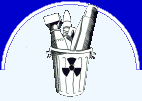Published in French on 6 October 2017
On 7 July 2017 in New York, 122 nations approved a treaty outlawing nuclear weapons. All UN member states are invited to sign and ratify it, as from 20 September 2017. It will enter into force three months after the 50th ratification. (1) Most French people are unaware of this, yet it is an event of major importance.
The end of an exception.
After Hiroshima and Nagasaki, the nuclear arms race engendered by the Cold War threatened humankind, and several times brought us to the brink of a nuclear war. In the middle of the 1980s it reached the crazy height of 70 000 weapons (mostly American and Russian). Then in December 1987 the Washington Treaty co-signed by Reagan and Gorbachev began their reduction, eliminating from Europe the medium-range nuclear forces (including SS20s and Pershings). But the estimated 15,000 atom bombs still in existence today could annihilate the 7 billion humans between 5 and 10 times over. France by herself with her 300 bombs (1.5% of the total) could cause a billion deaths (yet our strategists call this “strict sufficiency”).
Today numerous political and military leaders in all countries agree that the only way to certainly avoid new atomic massacres would be to eliminate every single one of these so-called “weapons of mass destruction”, which are in fact weapons for crimes against humanity and could even lead to the end of the human race.
The United Nations had hoped to eliminate them, from its very first resolution (2) and has denounced them many times. Thus “any state that uses nuclear and thermonuclear weapons much be deemed to be violating the UN Charter, acting in contempt of the laws of humanity and committing a crime against humanity and civilization”. (3) But they were never the object of an explicit ban or elimination treaty, whereas other indiscriminate weapons – which by their nature strike both combatants and civilians – have all been banned: biological weapons in 1972, chemical weapons in 1993, landmines in 1997, cluster munitions in 2008.
Why this one exception? Chiefly because of the NPT.
The double nature of the NPT
The Nuclear Non-Proliferation Treaty (NPT) was conceived and signed in 1968 by the USA, Russia and the UK to close the doors of the “nuclear club”. It entered into force in 1970. All but four UN member states belong to it. The non-nuclear states that signed it, receiving assurances that they could develop “peaceful” uses of nuclear energy (art.4) and receive technical aid, undertook to not obtain nuclear weapons. In exchange the states possessing nuclear weapons undertook to negotiate their elimination “at an early date” (art.6). The first group kept their promise – except for North Korea, which took advantage of the NPT to produce plutonium, and make weapons secretly (It withdrew from the treaty in 2002). The second group never kept their promise. There were five-yearly “review conferences” preceded by three yearly “preparatory committees”, by which the nuclear states (and their allies or protégés) made the others wait by promising "step by step" elimination through a “progressive approach".
So the NPT, a so-called “cornerstone of the nuclear disarmament regime” never disarmed anyone at all. On the contrary, it worked for years as a tool for the nuclear states (USA, USSR, UK in 1968, France and China in 1992) to keep their weapons, which they did, and to preserve their monopoly by preventing proliferation, at which they partly failed – they failed in that four states did join the nuclear club, three of whom refused to sign the NPT (Israel, India and Pakistan) and one by using the NPT to help itself build them (North Korea, the DPRK).
So we can be glad that nuclear weapons are at last outlawed. That should be a big step towards the step that really counts: their elimination. But is it? Alas, that is far from sure, for several reasons. The most obvious is that not one of the nuclear states, though having great interest, took part in negotiating the treaty this year in New York at the end of a ten-year process. And so far not one has the intention of joining the treaty, despite the converging pressure from a crowd of non-nuclear states and NGOs.
A long and difficult process
In 2007, a draft convention for eliminating nuclear weapons was initiated by the non-governmental "Abolition 2000" network and presented by Costa Rica at the UN General Assembly, which passed it. But that project conceived by non-nuclear states concerned the nuclear states, which had no intention of applying it. In the same year, an International Campaign to Abolish Nuclear Arms (ICAN) was launched by some Australian doctors, and was soon joined by numerous NGOs right across the world. Encouraged by Obama’s speech in Prague (on 5 April 2009) calling for a “world without nuclear weapons”, this campaign stressed the criminal and catastrophic nature of these weapons. In 2013 and 2014 it led to three intergovernmental conferences on the “humanitarian impact of nuclear weapons” (i.e. their inhuman effects). These took place in Norway, Mexico and Austria, and were open to NGOs.
The third of these conferences, in Vienna in December 2014, brought together 158 countries – including the USA and the UK, to the displeasure of France, which tried after that many ways to make them stay away. At the end of this conference the Austrian government made a solemn pledge to continue with all the states concerned ‘its efforts to stigmatize, outlaw and eliminate nuclear weapons in the light of their inacceptable consequences for humanity and the risks associated with them”.
On May 2015 there was a ninth NPT review conference which failed to any common declaration, and so the “Austrian Pledge” became the “Humanitarian Pledge” and received support from numerous non-nuclear countries. This led to the General Assembly deciding in 2015 to create “an open-ended working-group to advance the cause of nuclear disarmament”. This group met three times in Geneva in 2016, and on 19 August, in a memorable vote, adopted a recommendation inviting the UN to call a conference in 2017 to negotiate “a legally binding instrument to ban nuclear weapons with a view to their complete elimination". The UNGA passed this on 23 December 2016. The 2017 conference was then held in two sessions, 27-31 March and 15 June -7 July. The new Ban Treaty is its outcome. But it is binding only on the states that sign.
It is possible, of course, to think that stigmatizing nuclear weapons will lead the nuclear states, by moral and political pressure, to renounce them. That would be optimistic. Given that those nuclear states that signed the NPT spent decades flouting the obligation it imposed to eliminate them, how might they decide to apply a treaty they will not sign? Besides, some clauses seem ill-designed to attract their signatures (but that’s a matter for another article).
An uncertain future, and France both blocked and blocking
France took a very active part in boycotting these negotiations. She incited the states under her influence to not participate. On 27 March 2017, as the first session of the UN conference was opening, she held a press conference jointly with the USA and the UK to justify the refusal to negotiate. On 7 July, at the very moment when the treaty was voted through, they denounced it in a joint communiqué, affirming their intention to never sign. Since then, France’s new president has given repeated indications that he rejects any change. (4) Some way must be found to force him.
Jean-Marie Matagne
contact@acdn.net
+33 6 73 50 76 61
Notes
1 The text of the treaty: https://treaties.un.org/doc/Treaties/2017/07/20170707%2003-42%20PM/Ch_XXVI_9.pdf
2 Resolution of 24 Jan. 1946 (A/RES/1)
3 Resolution 1653 XVI of 24 Nov. 1961
4 Cf. http://www.acdn.net/spip/spip.php?article1084





